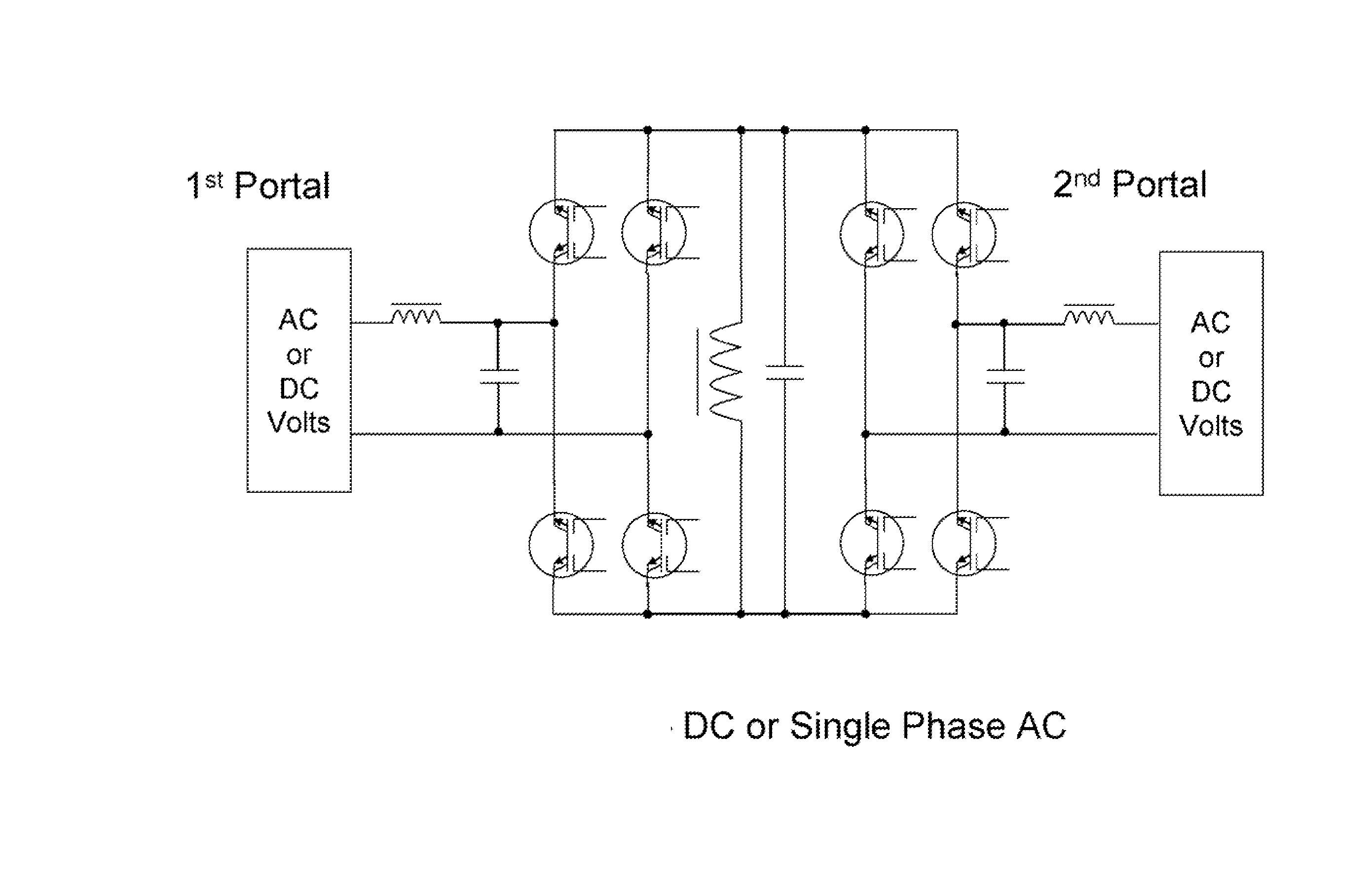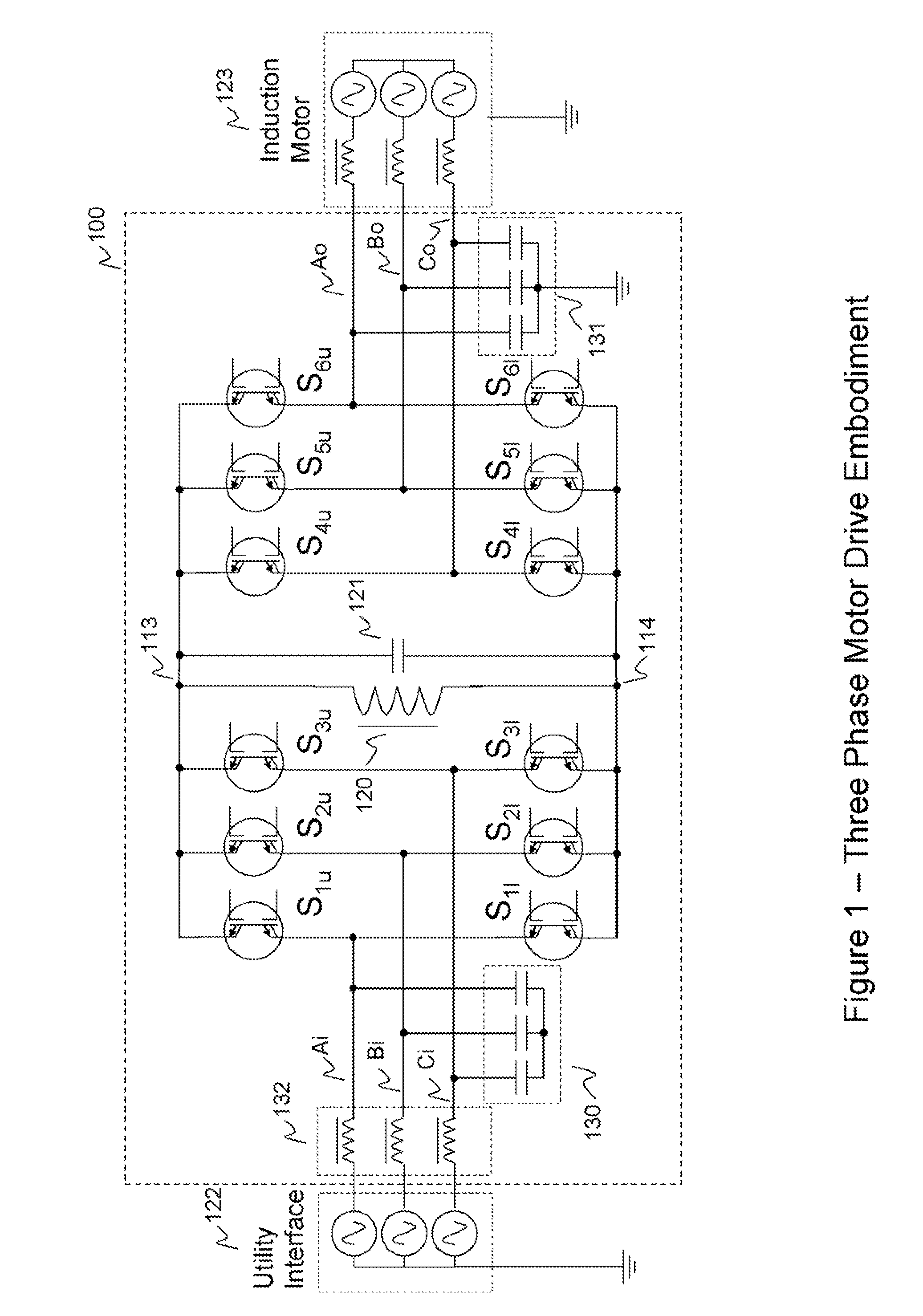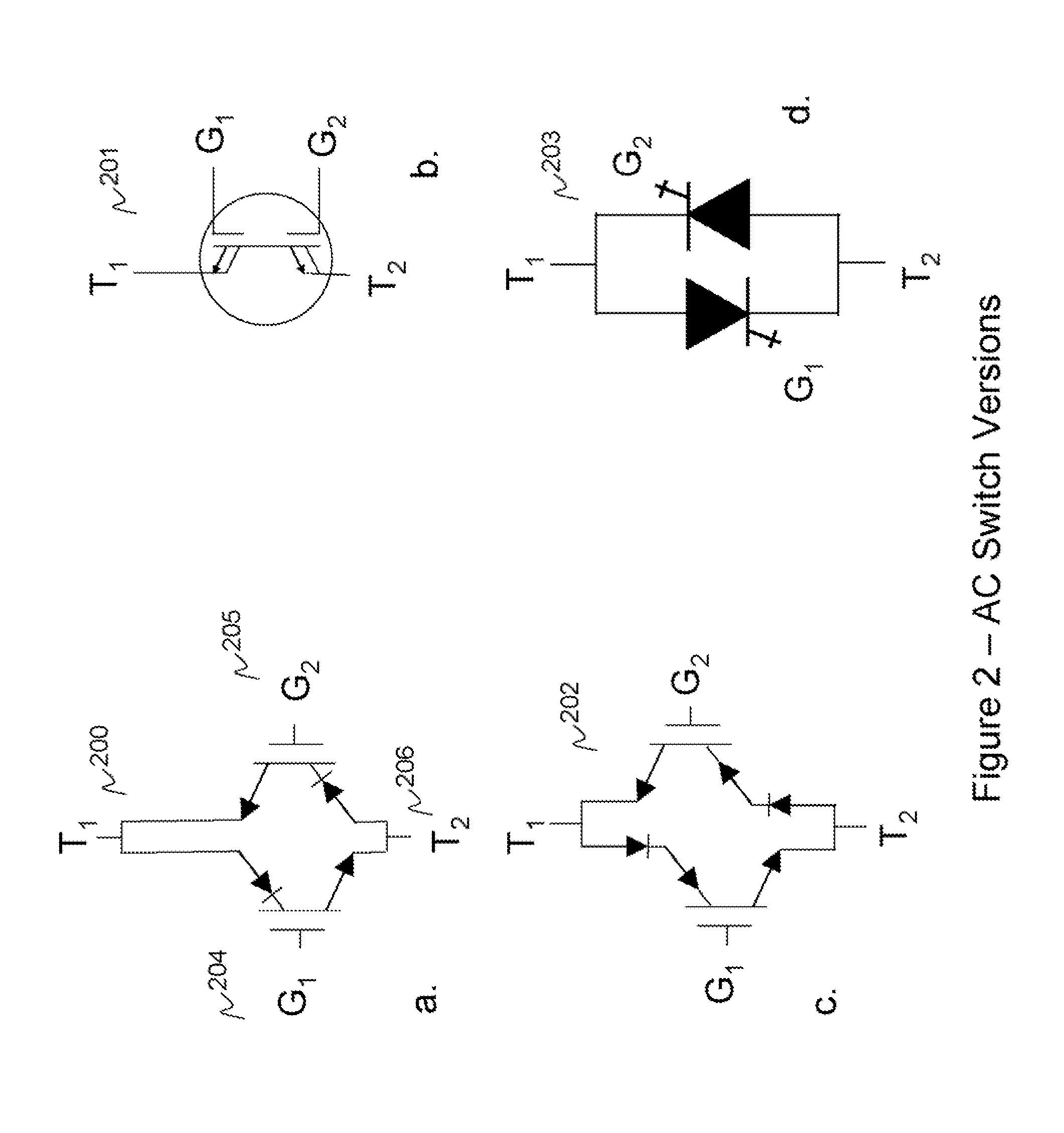A number of difficulties exist with the standard drive, however.
The pulses also cause higher losses in the DC link capacitor.
These losses reduce the efficiency of the drive, and also lessen the useful life of the DC link capacitor (commonly an Aluminum Electrolytic type), which has a limited life in any case.
If the impedance of the source power is too low, the pulses may become so large as to be unmanageable, in which case it is necessary to add
reactance in the input lines, which increases losses, size, cost, and weight of the drive.
Also, the voltage available for the output section is reduced, which may lead to loss-producing
harmonics or lower-than-design voltage on the output waveform when full power, full speed motor operation is called for.
These losses significantly increase the nominal losses of the motor, which reduces energy efficiency, resulting in higher motor temperatures, which reduces the useful life of the motor, and / or reduces the power available from the motor.
Additionally, due to
transmission line effects, the motor may be subject to voltages double the nominal peak-to-peak line voltage, which reduces the life of the motor by degrading its insulation.
The applied motor voltages are also not balanced relative to ground, and may have sudden deviations from such balance, which can result in current flow through the motor bearings for grounded motor frames, causing bearing damage and reduced motor life.
The sudden voltage swings at the motor input also cause objectionable sound emissions from the motor.
This requirement leads to selection of switches with drastically reduced carrier lifetimes and limited internal
gain.
This in turn decreases the conductance of each device, such that more
silicon area is required for a given amount of current.
Additionally, the switches must be constructed to provide
current limiting in the event of output line faults, which imposes additional design compromises on the switches which further increase their cost and losses.
Another problem with the standard drive is that the
DC link voltage must always be less than the average of the highest line-to-line input voltages, such that during periods of reduced input voltage (such as when other motors are started across-the-line), the
DC link voltage is insufficient to drive the motor.
Yet another difficulty with the standard drive is its susceptibility to input voltage transients.
This requires that the switches be rated for accordingly high voltages (e.g. 1600 volts for a 460 VAC drive). which increases cost per
ampere of drive.
The standard drive also cannot return power from the DC link to the input (regeneration), and therefore large braking resistors are required for any application in which the motor must be quickly stopped with a large inertial or gravitational load.
Modifications to the basic
motor drive described above are available, as also shown in FIG. 3, but invariably result in much higher costs, size, weight and losses.
For example, in order to reduce input current harmonics (
distortion) and to allow for regeneration, the
diode bridge may be replaced by an
active switch bridge identical to the output switch bridge, which is accompanied by an input filter consisting of inductors and capacitors, all of which result in higher costs and drive losses.
Also, as shown in FIG. 3, output filters (“sine filter”) are available to change the output voltage waveform to a sinusoid, but again at the expense of greater cost, size, weight, and losses.
AC-AC line conditioners are constructed in a similar fashion to the standard drive with input and output filters and an
active front end, and also suffer from the above mentioned problems.
Other motor AC-AC
converters are known, such as the Matrix Converter,
Current Source Converter, or various resonant AC and DC link
converters, but these either require
fast switching devices and substantial input and / or output filters, or large, lossy, and expensive
reactive components, or, as in the case of the Matrix Converter, are incapable of providing an output voltage equal to the input voltage.
There are many examples of this basic converter, all of which are necessarily hard switched and therefore do not have the soft-switched attribute, which leads to reduced converter efficiency and higher costs.
The input, however, cannot be AC, and its uses hard switching.
 Login to View More
Login to View More  Login to View More
Login to View More 


